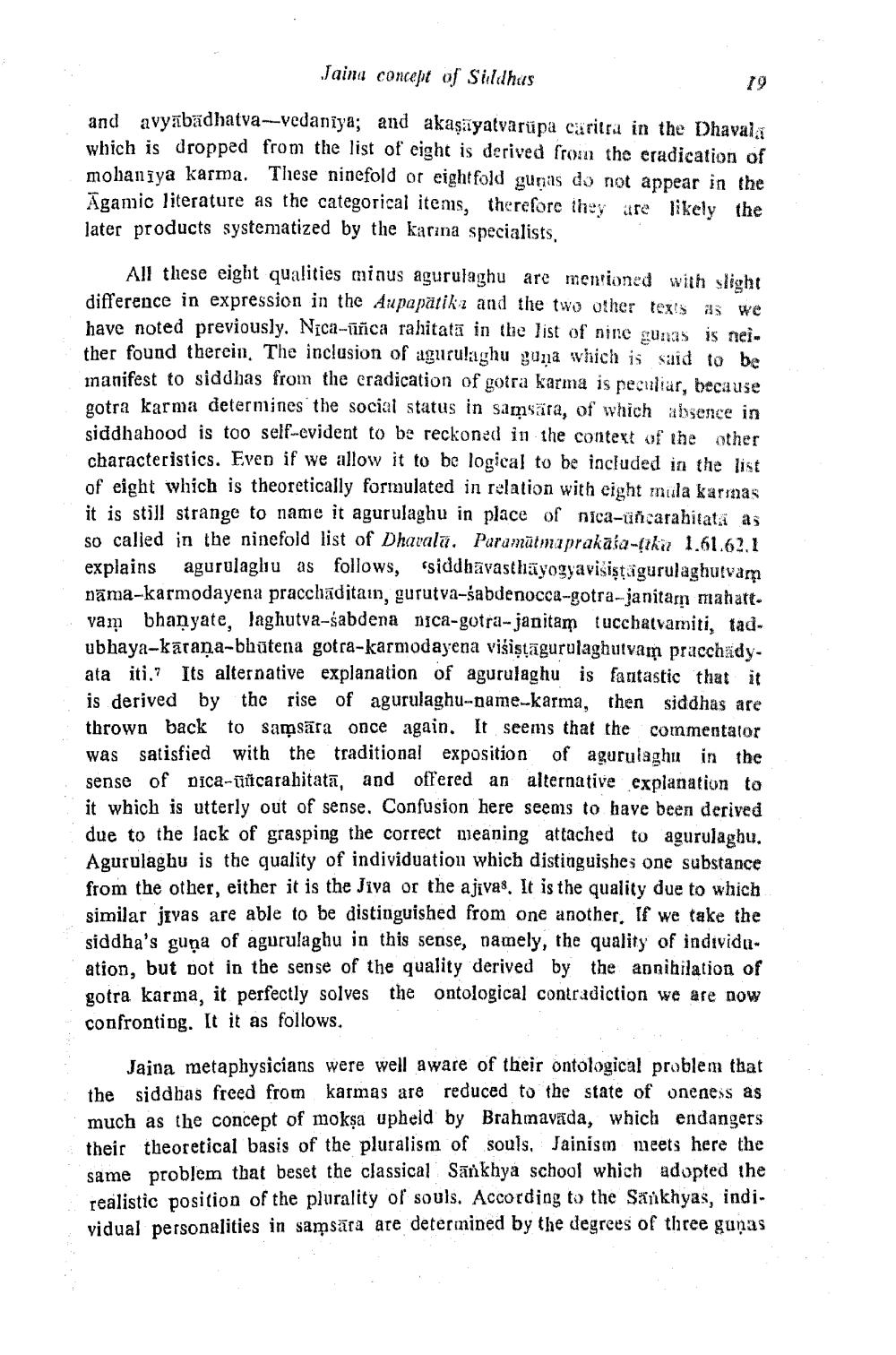________________
Jaing concept of Sildhus
and avyabädhatva---vedaniya; and akaşayatvarüpa caritra in the Dhavala which is dropped from the list of eight is derived from the eradication of mohaniya karma. These ninefold or eightfold gunos do not appear in the Agamic literature as the categorical items, therefore they are likely the later products systematized by the Karina specialists.
All these eight qualities miaus agurulaghu are mentioned with slight difference in expression in the Aupapätikz and the two other tex's as we have noted previously, Nica-ūñca rahitata in the list of nine Unas is nei. ther found therein. The inclusion of agurulaghu guna which is said to be inanifest to siddhas from the cradication of gotra karma is peculiar, because gotra karma determines the social status in samsära, of which absence in siddhabood is too self-evident to be reckoned in the context of the other characteristics. Even if we allow it to be logical to be included in the list of eight which is theoretically formulated in relation with eight mula karmas it is still strange to name it agurulaghu in place of nica-uncarabitata as so called in the ninefold list of Dhavalu. Paramütmaprakasa-ka 1.61.62.1 explains agurulagliu as follows, siddhävasthāyogyavisistagurulaghuvam pama-karmodayena praccladitain, gurutva-sabdenocca-gotra-janitam mahatt. vam bhanyate, laghutva-sabdena nica-gotra-janitam tucchatvamiti, tadubhaya-karana-bhūtena gotra-karmodayena višistāgurulaghutvam pracchädyata iti.' Its alternative explanation of agurulaghu is fantastic that it is derived by the rise of agurulaghu-game--karma, then siddhas are thrown back to samsāra once again. It seems that the commentator was satisfied with the traditional exposition of agurulaghu in the sense of Dica-utcarabitatā, and offered an alternative explanation to it which is utterly out of sense. Confusion here seems to have been derived due to the lack of grasping the correct meaning attached to agurulagbu, Agurulaghu is the quality of individuation which distinguishes one substance from the other, either it is the Java or the ajivas. It is the quality due to which similar jivas are able to be distinguished from one another, If we take the siddha's guna of agurulaghu in this sense, namely, the quality of individuation, but not in the sense of the quality derived by the annihilation gotra karma, it perfectly solves the ontological contradiction we are now confronting. It it as follows.
Jaina metaphysicians were well aware of their ontological problem that the siddhas freed from karmas are reduced to the state of oneness as much as the concept of moksa upheld by Brahmavada, which endangers their theoretical basis of the pluralism of souls. Jainism meets here the same problem that beset the classical Sankhya school which adopted the realistic position of the plurality of souls. According to the Sikhyas, individual personalities in samsāra are determined by the degrees of three gunas




